November 1, 2021 – Twelve-Step Programs
- Mary Reed

- Nov 1, 2021
- 8 min read
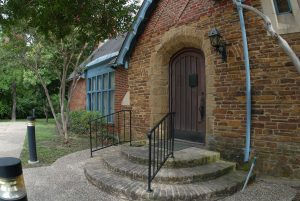
The church I attend, Lovers Lane United Methodist Church, has hosted numerous twelve-step programs for addictions for over 30 years. The photo is of the front of the building where all the 12-step groups meet across the street from the church. It was purchased in 1989 and named the Center for Spiritual Development or CSD. In 2005 the Twelfth Step Ministry was formalized into a nonprofit organization with its own board of directors. The Twelfth Step Ministry has achieved both local and national recognition as the leading recovery center in the Southwest. In January 2013 Twelfth Step Ministry was named Community Organization of the Year by the Texas Association of Addiction Professionals, Dallas Chapter. In both 2013 and 2014 Twelfth Step Ministry was recognized by the Office of National Drug Control Policy of the White House as a leader in the recovery community. Currently, every week CSD hosts over 70 meetings with approximately 1,250 people participating. Plans are under way to construct a new $6 million facility to accommodate the growing attendance. Groups that meet at CSD include Adult Children of Alcoholics and Dysfunctional Families, Alcoholics Anonymous, Cocaine Anonymous, Co-Dependents Anonymous, Debtors Anonymous, Eating Disorders Anonymous, Gamblers Anonymous, Infidelity Survivors Anonymous, Opiates Anonymous, Nicotine Anonymous and Sex Addicts Anonymous. There are also meetings for Spanish speakers only. I am proud to be associated with this vital asset in our community. Let’s learn more about twelve-step programs.
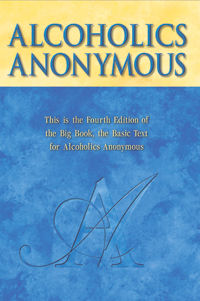
According to Wikipedia, twelve-step programs are mutual aid organizations for the purpose of recovery from substance addictions, behavioral addictions and compulsions. Developed in the 1930s, the first twelve-step program, Alcoholics Anonymous or AA aided its membership to overcome alcoholism. Since that time dozens of other organizations have been derived from AA's approach to address problems as varied as drug addiction, compulsive gambling, sex and overeating. All twelve-step programs utilize a version of AA's suggested twelve steps first published in the 1939 book “Alcoholics Anonymous: The Story of How More Than One Hundred Men Have Recovered from Alcoholism.”
As summarized by the American Psychological Association, the process involves the following:
- Admitting that one cannot control one's alcoholism, addiction or compulsion.
- Coming to believe in a Higher Power that can give strength.
- Examining past errors with the help of a sponsor — experienced member.
- Making amends for these errors.
- Learning to live a new life with a new code of behavior.
- Helping others who suffer from the same alcoholism, addictions or compulsions.

Overview
Twelve-step methods have been adapted to address a wide range of alcoholism, substance abuse and dependency problems. Over 200 self-help organizations — often known as fellowships, with a worldwide membership of millions — now employ twelve-step principles for recovery. Narcotics Anonymous was formed by addicts who did not relate to the specifics of alcohol dependency.
Demographic preferences related to the addicts' drug of choice has led to the creation of Cocaine Anonymous, Crystal Meth Anonymous and Marijuana Anonymous. Behavioral issues such as compulsion for or addiction to gambling, crime, food, sex, hoarding, getting into debt and work are addressed in fellowships such as Gamblers Anonymous, Overeaters Anonymous, Sexaholics Anonymous and Debtors Anonymous.
Auxiliary groups such as Al-Anon and Nar-Anon for friends and family members of alcoholics and addicts, respectively, are part of a response to treating addiction as a disease that is enabled by family systems. Adult Children of Alcoholics addresses the effects of growing up in an alcoholic or otherwise dysfunctional family. Co-Dependents Anonymous addresses compulsions related to relationships, referred to as codependency.
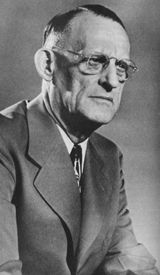
History
Alcoholics Anonymous, the first twelve-step fellowship, was founded in 1935 by Bill Wilson and Dr. Robert Holbrook Smith — known to AA members as "Bill W." and "Dr. Bob" — in Akron, Ohio. In 1946 they formally established the twelve traditions to help deal with the issues of how various groups could relate and function as membership grew. The practice of remaining anonymous — using only one's first names — when interacting with the general public was published in the first edition of the AA Big Book.
As AA chapters were increasing in number during the 1930s and 1940s, the guiding principles were gradually defined as the Twelve Traditions. A singleness of purpose emerged as Tradition Five: "Each group has but one primary purpose — to carry its message to the alcoholic who still suffers." Consequently, drug addicts who do not suffer from the specifics of alcoholism involved in AA hoping for recovery technically are not welcome in "closed" meetings unless they have a desire to stop drinking alcohol.
The principles of AA have been used to form many numbers of other fellowships specifically designed for those recovering from various pathologies; each emphasizes recovery from the specific malady which brought the sufferer into the fellowship.
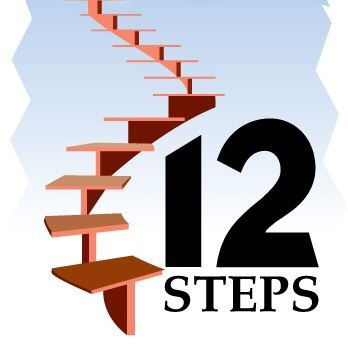
Twelve Steps
The following are the original twelve steps as published by Alcoholics Anonymous:
1. We admitted we were powerless over
alcohol — that our lives had become
unmanageable.
2. Came to believe that a power greater
than ourselves could restore us to
sanity.
3. Made a decision to turn our will and
our lives over to the care of God as we
understood Him.
4. Made a searching and fearless moral inventory of ourselves.
5. Admitted to God, to ourselves and to another human being the exact nature of our
wrongs.
6. Were entirely ready to have God remove all these defects of character.
7. Humbly asked Him to remove our shortcomings.
8. Made a list of all persons we had harmed and became willing to make amends to them
all.
9. Made direct amends to such people wherever possible, except when to do so would
injure them or others.
10. Continued to take personal inventory, and when we were wrong, promptly admitted it.
11. Sought through prayer and meditation to improve our conscious contact with God as we
understood Him, praying only for knowledge of His will for us and the power to carry that
out.
12. Having had a spiritual awakening as the result of these steps, we tried to carry this
message to alcoholics and to practice these principles in all our affairs.
In some cases, where other twelve-step groups have adapted the AA steps as guiding principles, step one is uniquely different for each organization, for example in Overeaters Anonymous, the first step reads, "We admitted we were powerless over compulsive overeating — that our lives had become unmanageable." The third step is also sometimes altered to emphasize principles important to those particular fellowships or to remove gender-specific pronouns language.

Twelve Traditions
The Twelve Traditions accompany the Twelve Steps. The Traditions provide guidelines for group governance. They were developed in AA in order to help resolve conflicts in the areas of publicity, politics, religion and finances. Alcoholics Anonymous' Twelve Traditions are:
1. Our common welfare should come first; personal recovery depends
upon AA unity.
2. For our group purpose there is but
one ultimate authority — a loving
God as He may express Himself in
our group conscience. Our leaders
are but trusted servants; they do not govern.
3. The only requirement for AA membership is a desire to stop drinking.
4. Each group should be autonomous except in matters affecting other groups or AA as a whole.
5. Each group has but one primary purpose — to carry its message to the alcoholic who still suffers.
6. An AA group ought never endorse, finance or lend the AA name to any related facility or outside enterprise, lest problems of money, property and prestige divert us from our primary purpose.
7. Every AA group ought to be fully self-supporting, declining outside contributions.
8. Alcoholics Anonymous should remain forever non-professional, but our service centers may employ special workers.
9. AA, as such, ought never be organized; but we may create service boards or committees directly responsible to those they serve.
10. Alcoholics Anonymous has no opinion on outside issues; hence the AA name ought never be drawn into public controversy.
11. Our public relations policy is based on attraction rather than promotion; we need always to maintain personal anonymity at the level of press, radio and films.
12. Anonymity is the spiritual foundation of all our traditions, ever reminding us to place principles before personalities.
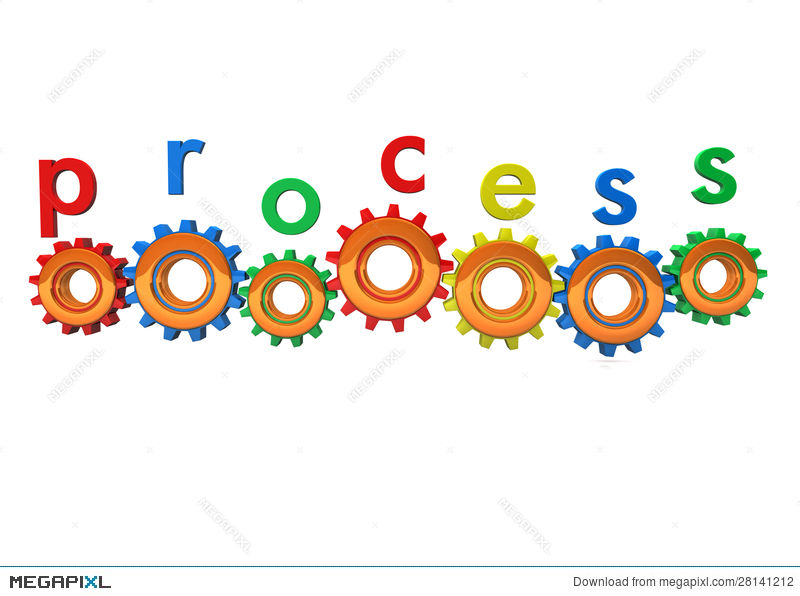
Process
In the twelve-step program, the human structure is symbolically represented in three dimensions: physical, mental and spiritual. The problems the groups deal with are understood to manifest themselves in each dimension. For addicts and alcoholics, the physical dimension is best described by the allergy-like bodily reaction resulting in the compulsion to continue using substances after the initial use. The statement in the First Step that the individual is "powerless" over the substance-abuse related behavior at issue refers to the lack of control over this compulsion, which persists despite any negative consequences that may be endured as a result.
The mental obsession is described as the cognitive processes that cause the individual to repeat the compulsive behavior after some period of abstinence, either knowing that the result will be an inability to stop or operating under the delusion that the result will be different. The description in the First Step of the life of the alcoholic or addict as "unmanageable" refers to the lack of choice that the mind of the addict or alcoholic affords concerning whether to drink or use again. The illness of the spiritual dimension or "spiritual malady" is considered in all twelve-step groups to be self-centeredness. The process of working the steps is intended to replace self-centeredness with a growing moral consciousness and a willingness for self-sacrifice and unselfish constructive action. In twelve-step groups, this is known as a "spiritual awakening." This should not be confused with abreaction, which produces dramatic, but temporary, changes. As a rule, in twelve-step fellowships, spiritual awakening occurs slowly over a period of time, although there are exceptions where members experience a sudden spiritual awakening.
In accordance with the First Step, twelve-step groups emphasize self-admission by members of the problem they are recovering from. It is in this spirit that members often identify themselves along with an admission of their problem, often as "Hi, I’m [first name only], and I’m an alcoholic."

Sponsorship
A sponsor is a more experienced person in recovery who guides the less-experienced aspirant or "sponsee" through the program's twelve steps. New members in twelve-step programs are encouraged to secure a relationship with at least one sponsor who both has a sponsor and has taken the twelve steps themselves. Publications from twelve-step fellowships emphasize that sponsorship is a "one-on-one" nonhierarchical relationship of shared experiences focused on working the Twelve Steps. According to Narcotics Anonymous:
Sponsors share their experience, strength and hope with their sponsees... A sponsor's role is not that of a legal adviser, a banker, a parent, a marriage counselor or a social worker. Nor is a sponsor a therapist offering some sort of professional advice. A sponsor is simply another addict in recovery who is willing to share his or her journey through the Twelve Steps.
Sponsors and sponsees participate in activities that lead to spiritual growth. Experiences in the program are often shared by outgoing members with incoming members. This rotation of experience is often considered to have a great spiritual reward. These may include practices such as literature discussion and study, meditation and writing. Completing the program usually implies competency to guide newcomers which is often encouraged. Sponsees typically do their Fifth Step — review their moral inventory written as part of the Fourth Step — with their sponsor. The Fifth Step, as well as the Ninth Step, have been compared to confession and penitence. French philosopher Michel Foucault noted such practices produce intrinsic modifications in the person — exonerating, redeeming and purifying them; relieves them of their burden of wrong, liberating them and promising salvation.
The personal nature of the behavioral issues that lead to seeking help in twelve-step fellowships results in a strong relationship between sponsee and sponsor. As the relationship is based on spiritual principles, it is unique and not generally characterized as "friendship." Fundamentally, the sponsor has the single purpose of helping the sponsee recover from the behavioral problem that brought the sufferer into twelve-step work, which reflexively helps the sponsor recover.
A study of sponsorship as practiced in Alcoholics Anonymous and Narcotics Anonymous found that providing direction and support to other alcoholics and addicts is associated with sustained abstinence for the sponsor but suggested that there were few short-term benefits for the sponsee's one-year sustained abstinence rate.




Comments